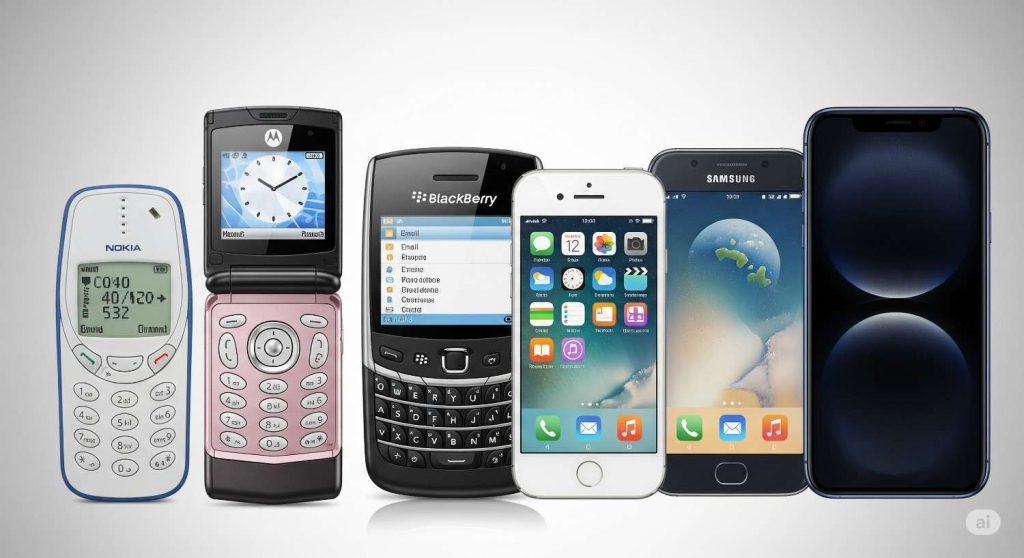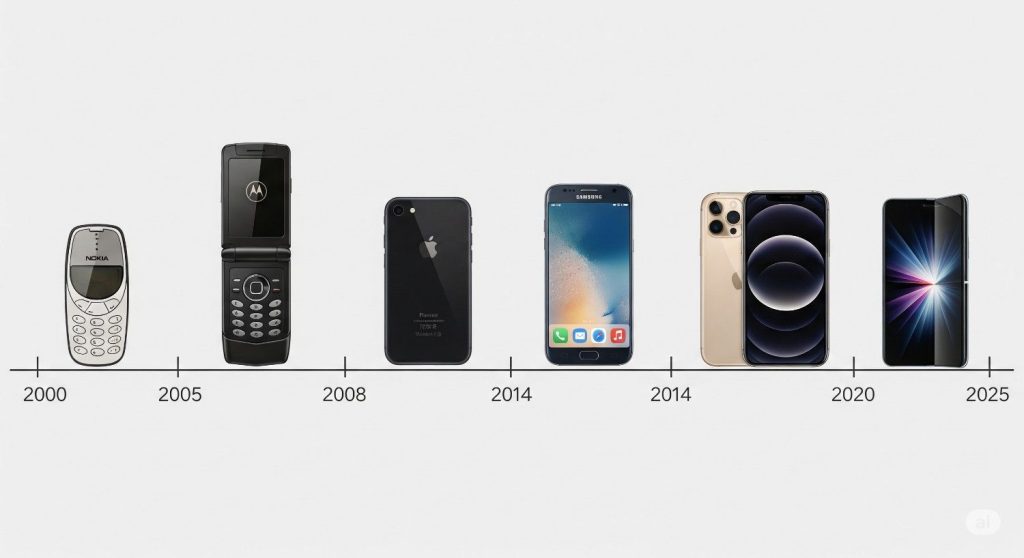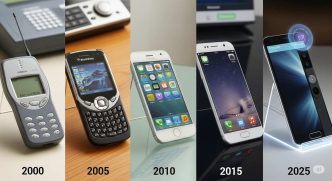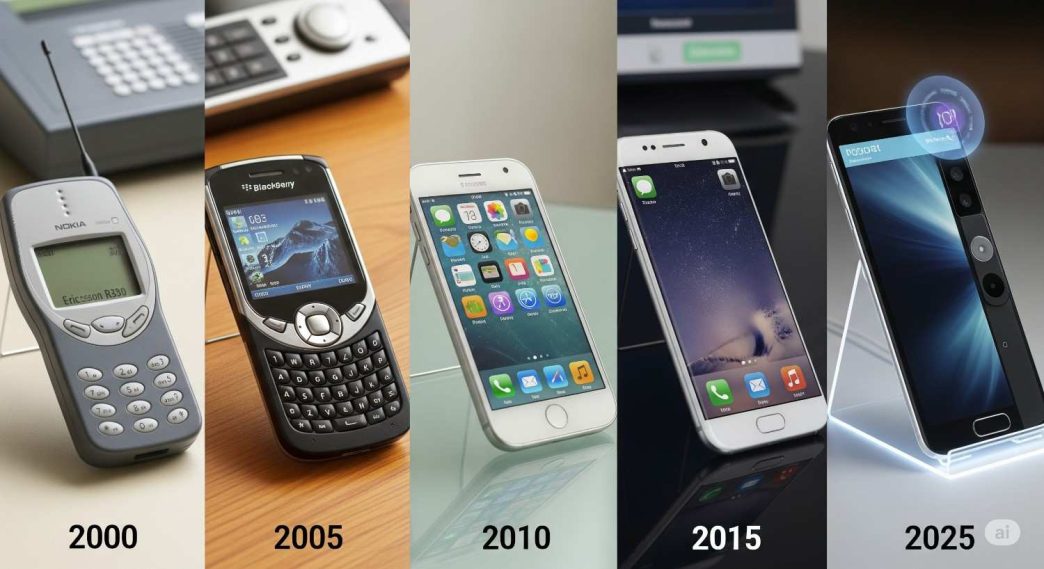Discover how smartphones have evolved from simple communication devices in 2000 to AI-powered multi-functional tools in 2025.
Introduction
The smartphone has become one of the most transformative technologies of the 21st century. From bulky devices with tiny monochrome screens in the early 2000s to sleek, AI-powered, foldable, and ultra-connected gadgets in 2025 — the evolution of smartphones is a story of innovation, competition, and changing lifestyles.

Early 2000s: The Birth of the smartphones Internet Era
In the early 2000s, phones were primarily for calling and texting. Popular models like the Nokia 3310 and Motorola Razr dominated the market. Features were limited to SMS, basic games like Snake, and simple cameras with VGA resolution.
- Key Features: Monochrome displays, physical keypads, long battery life
- Connectivity: 2G networks, SMS, MMS
2007–2010: The Rise of the Modern Smartphones
The game-changing moment came in 2007 when Apple introduced the first iPhone. It replaced physical keypads with a full touchscreen interface and brought the concept of apps to the mainstream.
- Key Milestones:
- iPhone (2007) revolutionized UI design
- Android OS launched (2008) with the HTC Dream
- Introduction of app stores (Apple App Store in 2008, Google Play in 2012)
Impact: Smartphones transitioned from communication tools to pocket-sized computers.

2010–2015: The App Boom and Mobile Lifestyle
During this period, smartphones became essential for daily life. Social media apps like Facebook, Instagram, and WhatsApp exploded in popularity. Cameras improved dramatically, and 4G LTE made streaming and mobile gaming a reality.
- Key Advancements:
- Multi-core processors for faster performance
- HD and Full HD displays
- Mobile payment systems (Apple Pay, Google Wallet)
2015–2020: Bigger Screens, Smarter Devices
Manufacturers embraced larger, edge-to-edge displays and advanced camera systems. AI assistants like Siri, Google Assistant, and Alexa became common, while biometric authentication improved security.
- Trends:
- Dual & triple-lens cameras for better photography
- Water-resistant designs
- Wireless charging
2020–2025: The Era of AI, 5G, and Foldable Phones
By 2025, smartphones are smarter, faster, and more integrated into our lives than ever before.
- Major Shifts:
- 5G networks enabling ultra-fast internet and low-latency streaming
- Foldable & rollable displays merging portability with large-screen productivity
- AI-driven personalization — phones that adapt to user habits
- Advanced AR and VR experiences directly from mobile devices
Examples:
- Samsung Galaxy Z Fold series for foldable tech
- Apple’s ARKit & Google’s ARCore for immersive experiences
- AI-powered photography making professional-level images possible for everyone
Key Innovations Over 25 Years
| Year/Period | Innovation |
|---|---|
| 2000–2005 | Camera phones, polyphonic ringtones |
| 2007 | iPhone & capacitive touchscreen |
| 2010–2015 | App ecosystem boom, 4G LTE |
| 2015–2020 | Bezel-less displays, wireless charging |
| 2020–2025 | Foldable screens, 5G, AI integration |

The Future Beyond 2025
The smartphones may evolve into something even more integrated with human life — possibly merging with wearable devices or becoming holographic and fully voice-controlled. Advances in quantum computing, satellite connectivity, and brain-computer interfaces could redefine what “smartphone” means entirely.
FAQs
1. What was the first smartphone?
The IBM Simon, released in 1994, is considered the first true smartphone.
2. When did the iPhone launch?
Apple released the first iPhone in 2007.
3. What’s the biggest change in smartphones from 2000 to 2025?
The shift from physical keypads to AI-powered touchscreen devices.
4. Are foldable phones the future?
They are part of the future, offering both compact and large-screen experiences.
5. Will smartphones be replaced by wearables?
Possibly in the long term, as AR glasses and wearable tech become more advanced.
Conclusion
From simple mobile phones to AI-powered foldables, the evolution of smartphones from 2000 to 2025 reflects humanity’s constant push for innovation. As technology continues to advance, the devices in our pockets will keep shaping how we live, work, and connect.smartphones
Know more related:
Future of Work 2025: How AI Is Changing Careers








